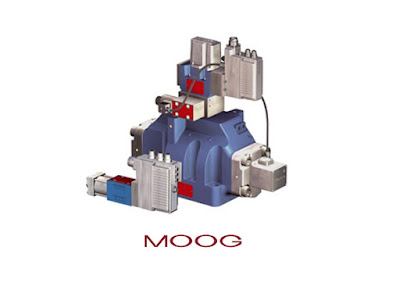In the lates developed intelligence in the Digital Control Servo Valves design and manufacturing world, every designer demanded to integrate and control the machine of production in such specific ways, as they are newer technologies that become part of nowadays manufacturing industry. With 60 years experience, Moog introduced the most advanced family of Digital and Axis Control Servo Valves to provide machine designers ability to adapt the valves and tune the software to meet their exact machine demands for maintenance, flexibility and increased production.
The Digital and Axis Control Servo Valves from Moog comes with intelligent support for motion control tasks that is ready to integrate to the digital valve electronics for unparalleled flexibility, high productivity and simple maintenance.
Image by http://www.moog.com
• This Digital Control Servo Valves has high flexibility to the hardware
• High configuration and functionality for specific based application required
• More dynamic compared to the traditional valve technology as benefit of new technology on software and hardware.
• Available global support and help on training delivered by expert
- Time to time tested product quality for unbeatable reliability in many industrial applications
- Minimizing the risk of production because of the product quality
- Adaptable to the new technology in resulting higher machine uptime and availability
- Increased machine performance in the sites such as better productivity, enhanced accuracy and higher acceleration
- Ensures you get the optimized performance for the life of the machine
- Ability to support the product with the similar valve over time
- Reduces downtime and protect your valuable investment
The Digital and Axis Control Servo Valves from Moog comes with intelligent support for motion control tasks that is ready to integrate to the digital valve electronics for unparalleled flexibility, high productivity and simple maintenance.
Moog’s family of Digital and Axis Control Servo Valves
Moog’s family of Digital and Axis Control Servo Valves has several variants as below:Digital Control Servo Valves (DCV)
This Digital Control Servo Valves (DCV) provides power of intelligent closed-loop motion control with either fieldbus or analog interfaces. This feature designed to give you full control to optimize the machine functionality.Axis Control Servo Valves (ACV)
This Axis Control Servo Valves (ACV) provides the most advanced functionality for machine design by taking benefit of power of intelligent closed-loop motion control by closing the control loop right in the valve. You will get the most advanced system including remote diagnostics, machine optimization and decentralized control.ATEX Digital & Axis Control Valves
Additional feature for a valve certified for use in hazardous environments to the both DCV and ACV applications.The Common Features of Moog’s Digital and Axis Control Servo
Moog’s Digital and Axis Control Servo has many features to support its function such as robust hardware and electronics component designed for extreme environments like gas turbines and wind turbines. In addition, you can see as below:• This Digital Control Servo Valves has high flexibility to the hardware
• High configuration and functionality for specific based application required
• More dynamic compared to the traditional valve technology as benefit of new technology on software and hardware.
• Available global support and help on training delivered by expert
The Advantages of Moog’s Digital and Axis Control Servo
Using Digital Control Servo Valves enables user to allows you to optimize and maximize the machine performance for better market gain. Another benefits as below:- Time to time tested product quality for unbeatable reliability in many industrial applications
- Minimizing the risk of production because of the product quality
- Adaptable to the new technology in resulting higher machine uptime and availability
- Increased machine performance in the sites such as better productivity, enhanced accuracy and higher acceleration
- Ensures you get the optimized performance for the life of the machine
- Ability to support the product with the similar valve over time
- Reduces downtime and protect your valuable investment
